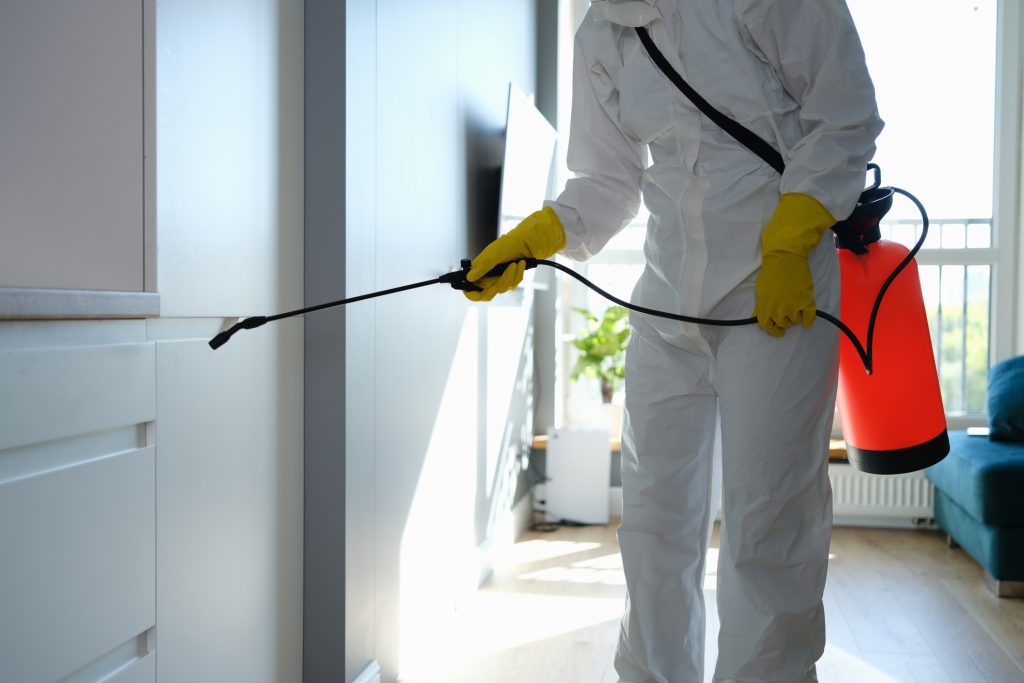Pest Control solutions to keep your space pest-free from unwanted pests.
Eco-Friendly Bug Control Approaches for Taking Care Of Wildlife in Urban Locations
Urban locations usually locate themselves at the junction of human task and wild animals, leading to unique obstacles in parasite monitoring. These methods not just safeguard the setting yet additionally improve neighborhood engagement in wild animals monitoring. As metropolitan populations continue to expand, comprehending the dynamics of wild animals communications comes to be increasingly crucial.
Understanding Urban Wild Animals Dynamics
Understanding Urban Wild animals Dynamics is important for developing reliable and green bug control techniques. Urban areas are increasingly coming to be environments for various wild animals species, driven by variables such as environment fragmentation, food availability, and human infringement. Recognizing these characteristics allows for a nuanced strategy to pest monitoring that lines up with eco-friendly concepts.
Urban wildlife commonly includes varieties such as raccoons, squirrels, and birds, which adapt to city settings, discovering niches in environment-friendly spaces, parks, and also houses. Their visibility can result in conflicts with humans, especially when they exploit human resources for food and sanctuary. Understanding the actions and ecological duties of these species notifies strategies that lessen adverse interactions while promoting biodiversity.
In addition, acknowledging the interdependencies within metropolitan ecological communities assists in determining critical areas for habitat preservation and repair. This expertise contributes to the advancement of integrated bug monitoring (IPM) techniques that think about the environmental equilibrium, therefore decreasing dependence on harmful chemicals. By fostering coexistence between people and metropolitan wild animals, cities can produce much healthier settings that profit both residents and local ecological communities, paving the method for sustainable metropolitan living.
All-natural Repellents and Deterrents
Natural repellents and deterrents use a sustainable option to traditional bug control techniques by using the power of nature to maintain undesirable types away. These eco-friendly solutions generally utilize plant-based ingredients, important oils, and various other normally taking place compounds that prevent insects without harming the environment.
One efficient natural repellent is peppermint oil, which is understood to ward off rodents and pests. Its solid fragrance is unpleasant to numerous pests, making it a preferred selection for metropolitan settings. In a similar way, vinegar and citrus peels can function as deterrents, as their strong smells are commonly unattractive to various wild animals.
Additionally, diatomaceous planet is an all-natural powder that can be spread out in areas vulnerable to insect activity, successfully dehydrating and deterring insects without posing threats to non-target varieties. Additionally, garlic sprays and neem oil are acknowledged for their capacity to drive away a variety of insects, consisting of both insects and bigger wild animals.
Applying these natural repellents not just reduces dependence on chemical pesticides however additionally promotes a much healthier city environment, fostering an extra balanced conjunction in between humans and wild animals. By making use of these methods, urban locations can effectively manage bug populaces while reducing environmental impact.
Environment Alteration Techniques
Efficient environment alteration techniques play an essential duty in straight from the source lasting pest administration by modifying the setting to make it less for pest infestations. By comprehending the eco-friendly characteristics of city locations, building proprietors can implement strategic modifications that discourage bugs while advertising biodiversity.
(Exclusion Pest Control)One key technique involves preserving appropriate hygiene. This consists of regular waste elimination, safeguarding garbage bins, and eliminating standing water to decrease breeding sites for bugs and rodents. Furthermore, landscape design methods such as picking indigenous plants can boost eco-friendly balance, supplying environments for helpful microorganisms while decreasing sources for parasites.
One more essential strategy is to secure entry factors in structures. Evaluating and repairing cracks in structures, walls, and windows can significantly decrease pest accessibility. Moreover, creating physical obstacles, such as fences or plant buffers, can inhibit wild animals movement right into human-inhabited locations.
Integrated Pest Monitoring Practices
Structure upon habitat alteration methods, incorporated insect management (IPM) methods offer a holistic strategy to managing pest populations while decreasing environmental influence. IPM combines numerous strategies, consisting of organic, cultural, mechanical, and chemical controls, to attain effective bug administration.
Biological control includes the intro of natural predators or bloodsuckers to reduce parasite populations. Social techniques, such as crop rotation and hygiene, disrupt pest life cycles and diminish their environments - Pest control service. Mechanical controls, like traps and barriers, supply prompt remedy for parasite pressures without chemical treatment
Chemical controls are utilized as a last hope, concentrating on targeted applications that restrict injury to non-target species and the atmosphere. The option of eco friendly pesticides, when required, is important to the IPM structure. Furthermore, keeping track of bug populaces and analyzing possible damages helps inform decision-making, guaranteeing that treatments are prompt and reliable.
Area Participation and Education And Learning

(Organic pest control Port Charlotte)Workshops and informative sessions can outfit homeowners with knowledge concerning indigenous species, environment conservation, and effective non-toxic pest monitoring methods. Partnership with colleges, neighborhood companies, and government agencies further enhances instructional outreach, ensuring that important information reaches varied target markets.
Furthermore, community-led initiatives, such as neighborhood clean-up days and habitat repair projects, not just advertise biodiversity however also strengthen area ties. Pest Control. By encouraging residents to share their experiences and monitorings, neighborhoods can develop targeted strategies that resolve particular regional pest concerns
Integrating feedback from homeowners into pest administration plans makes it possible for a much more responsive and flexible approach to wild animals challenges. Ultimately, informed and involved communities are vital to accomplishing lasting success in environment-friendly insect control, bring about much healthier metropolitan environments that appreciate both human and eco-friendly requirements.

Verdict
To conclude, eco-friendly parasite control approaches deal lasting solutions for handling city wild animals. By focusing on habitat modification, using all-natural repellents, and implementing integrated insect administration techniques, areas can foster a harmonious conjunction with regional fauna. Additionally, engaging citizens with education and learning boosts recognition and motivates accountable wild animals communications. Ultimately, these strategies not only protect biodiversity but likewise promote environmental health, guaranteeing urban areas continue to be vivid environments where human beings and wild animals flourish together.